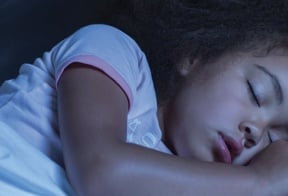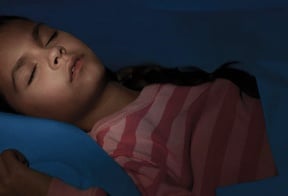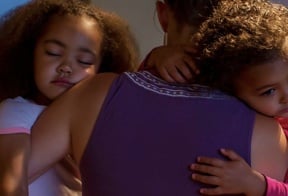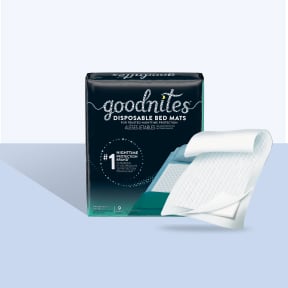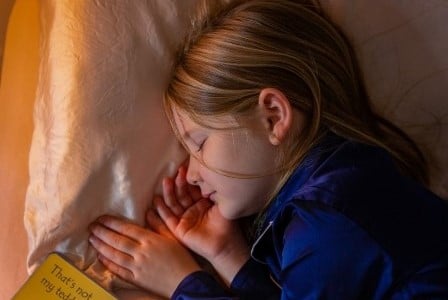
America is a nation on the go. We love long weekends, vacations and visiting relatives. But with a child who wets the bed, there are extra considerations when planning these trips.
Lana of Westover, MD, knows how worrisome trips with kids who experience bedwetting (or nighttime wetting) can be. “I have an 8-year-old who still sleeps so soundly she doesn’t wake to go to the bathroom,” Lana says. “In this past year, she’s become conscientious about it. When we travel, I always make sure I have Goodnites® Bed Mats and her Goodnites® NightTime Underwear.”
The Stress of Travel with Kids Who Wet the Bed
Oftentimes, the systems and routines you use at home are not in place when you travel. This disruption in routine can be stressful for a child who is already sensitive about nighttime wetting. It’s important to reassure your child while traveling that, no matter what, everything will be OK. “I like to explain that you really can’t help what you do in your sleep. Like a dream, you really can’t control it.” Most children think they are the only ones with this issue, but it’s really very common.
Tips for a Stress-free Trip
Dr. Danielson also suggests that parents make it easy for their child to get up during the night to get to the bathroom. Before the child goes to bed, practice walking to the bathroom and show him where the light switches are. “Show your child where you or the adult will be sleeping, and reassure him that if he is scared in the middle of the night, someone in charge is close,” Dr. Danielson says. “As long as you, the parent, understand that bedwetting is not your child’s fault, it will strongly increase your child’s ability to deal with it.”
If you are visiting relatives or friends, though it can seem uncomfortable at times, it isn’t a bad idea to let them know ahead of time that your child wets the bed. Most adults are understanding, and the news of a wet bed will always go over better if you help with the preparation and clean-up of any accident.
“Additionally, if your hosts can put your child in his own bed or sleeping bag, it can reduce the potential clean-up,” Dr. Danielson says. “If you can, it may be wise to bring a plastic mattress cover or sleeping bag liner to prevent damage. Bringing along a spare clean set of sheets and pajamas doesn’t hurt either.”
7 Tips for Traveling with a Child Who Wets the Bed
- Plan ahead. Think about your trip and where your child will be sleeping. Depending on how, where and when you travel, it may be hard to find places to wash clothes and get fresh sheets if nighttime wetting occurs, so you may want to take an extra set of bedding with you. If you’re staying in a hotel, contact the hotel before you arrive and ask for a roll-away bed in your room as well as an extra set of clean sheets. That can be easier than hauling along your own kids travel bed.
- Reduce the need for clean-up. Using Goodnites® NightTime Underwear makes for a comfortable sleep experience and reduces clean-up time, no matter where you are. If you’re camping, bring a waterproof liner for sleeping bags and camper bunks.
- Pack extra supplies. Bring along an extra pair of pajamas and some wipes so your child can change quickly and get back to sleep. If your child is going to a sleepover with friends, consider buying two pairs of the same pajamas, so no one will notice if they need to change.Your child can also hide an extra pair of Goodnites® NightTime Underwear in their sleeping bag or in the bathroom.
- Monitor liquid intake after dinner. Make sure your child avoids sugary beverages, and encourage them to use the toilet right before bedtime.
- Make getting to the bathroom easier. If possible, make it easier for your child to get up in the middle of the night and find the bathroom by using a nightlight.
- Be consistent with your nighttime routine. The things you do before bedtime shouldn’t change just because you’re in a different location.
- Handle accidents with grace. If your child does have an accident, address it calmly and have them help you clean up. Make sure to reassure your child that it is OK.
